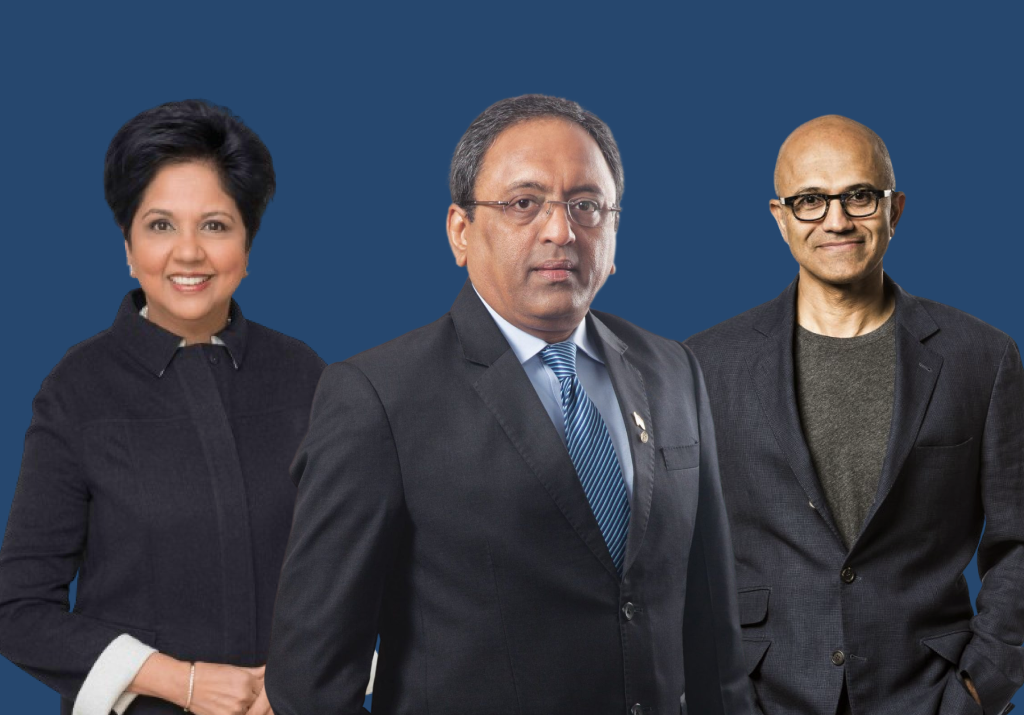Five days have passed since the viral video of the L&T chairman SN Subrahmanyan berating his own staff at an internal townhall surfaced on social media.
Except if you were living under a rock, it is unlikely that you would have missed the seemingly unending storm that the video triggered. The meme fest and the commentary on LinkedIn and Facebook seem to have a life of its own.
To be sure, it could have been a great teachable moment for India’s largest independent, diversified conglomerate. Instead, it is quickly turning out to be a damp squib, threatening to wreck serious damage to its corporate reputation and employer brand.
It looks as if Subrahmanyan, his leadership team and the strategic communication advisors are like deer in the headlights. They have very little clue of how to douse the fires. From the very start, the crisis communication strategy lacked a unified narrative, the execution has been mindlessly reactive and purposeless.
One day after the tsunami struck, the company first issued an anodyne statement on L&T role’s in nation-building (see image above). Over the next two days, the company fielded two senior women HR executives (see here and here) to defend their big boss through posts on LinkedIn. They were both lampooned (make sure you scan the comments section on both posts). The man at the centre of the storm chose to completely disappear from the public glare, and has not said a word so far.
Will the L&T board step up? It is unclear if they will have the gumption to at least privately nudge the chairman to deal with the crisis on the front foot. Most L&T watchers, however, say they don’t expect any proactive steps from the board. They aver if anyone has the power, it is the former chairman and the chairman emeritus AM Naik. He chairs the L&T Welfare Foundation, which at 12.54% stake, remains the single largest shareholder in L&T. Now, given that Naik personally handpicked Subrahmanyan as his successor, it is anybody’s guess whether Naik will act. Or treat this merely as a passing storm.
So here’s the moot point: what could the company have done differently? One thing is sure: if the company had decided to stay quiet and wait it out for the storm to subside–however unpopular that option may seem–it may have been preferable to the hamhanded approach it chose to eventually deploy.
There is a clearly established playbook for crisis communication around the world. There are enough instances of CEOs suffering from foot-in-the-mouth syndrome, like Subrahmanyan.
Let’s take two well-known global examples, both involving CEOs of Indian origin, Indra Nooyi at PepsiCo and Satya Nadella at Microsoft, when their public utterances landed them–and their companies–in a soup.
Middle finger, America!
On May 15, 2005, Nooyi delivered a commencement speech at the Columbia Business School that whipped up a blogstorm. The theme of her speech was about the unintended consequences of globalisation and the need to be sensitive to other cultures. Nooyi had compared the five continents of the world to the five fingers of the hand. Europe was the index finger, Asia was the thumb, Africa the little finger and the US, the middle finger. What stirred up emotions, especially among popular conservative bloggers, is the analogy Nooyi used, comparing America to the middle finger on a hand. It was construed as stridently anti-American, triggering irate Americans to demand a boycott of Pepsico products.
In her speech, Nooyi shared an anecdote from China to make a larger point about cultural insensitivity:
“A U.S. businesswoman was recently in Beijing, China, on an international training assignment for a luxury hotel chain. The chain was rebranding an older Beijing hotel. As such, the toilets in the hotel had yet to be upgraded. There were no porcelain commodes, just holes in the floor.. Until recently, this was the standard procedure in China.
Now, 8,000 miles removed from the scene, you and I -- and most Americans -- can shake our heads and giggle at the physical contortions and delicate motor skills necessary to make the best of this situation. We're simply not used to it. But to loudly and insultingly verbalize these feelings onsite, in front of the employees and guests of the host country, is bush league. And yet, that's exactly what this woman observed.
In the hotel's bar, the woman overheard a group of five American businessmen loudly making fun of the hotel's lavatory facilities. As the drinks flowed, the crass and vulgar comments grew louder, and actually took on an angry, jingoistic tone. While these Americans couldn't speak a word of Chinese, their Chinese hosts spoke English very well, and understood every word the men were saying.
And we wonder why the world views many Americans as boorish and culturally insensitive. This incident should make it abundantly clear. These men were not giving China a hand. They were giving China the finger. This finger was red, white, and blue, and had "the United States" stamped all over it.”
Now, the video recording of Nooyi’s speech is not available on YouTube or on the Columbia Business School website. But you can read the full transcript of her talk here. (Read time: 5 mins). Or listen to an audio version here (in someone else's voice though) (Listen time: 12:30 mins).
So how did Indra Nooyi deal with the fallouts?
She had to put out a formal apology after an initial clarification did nothing to calm detractors, calling for a boycott of PepsiCo products. “I appreciate the honest comments that have been shared with me since then, and am deeply sorry for offending anyone,” she said in a statement posted on the Pepsi website. “Over the years I have witnessed and advised others how a thoughtless gesture or comment can hurt good caring people. Regrettably, I have proven my own point. Please accept my sincere apologies,” she added.
Nadella’s gaffe: “The best thing that could have ever happened to Microsoft”
In 2014, Microsoft CEO Satya Nadella told Harvey Mudd College President Dr Maria Klawe — on stage at a celebration of women in computing — that women shouldn’t worry about asking for raises, and should instead rely on “good karma” and trust that the system will eventually reward their work.
Klawe and Nadella were speaking at the Grace Hopper event in Phoenix, Ariz., organized by the Anita Borg Institute for Women and Technology, and the Association for Computing Machinery. Klawe immediately differed with Nadella’s comments. Amid the controversy afterward, he apologized and said he was wrong.
Nadella’s gaffe occurred when Klawe asked what he would advise women who are uncomfortable asking for a raise. Nadella said that women should trust that the system will give the right raises to deserving employees eventually.
“That might be one of the additional superpowers that, quite frankly, women who don’t ask for a raise have,” he said. “Because that’s good karma. It’ll come back because somebody’s going to know that’s the kind of person that I want to trust. That’s the kind of person that I want to really give more responsibility to. In the long-term efficiency, things catch up.”
Quickly sensing just how badly the gaffe had landed and the reputational damage that it may have caused, a story by Kara Swisher in Recode, says Nadella furiously backpedaled in a memo to employees, which was the right thing to do and to do quickly. He put out a statement on X and also wrote to employees.
Read Nadella’s email to his Microsoft employees:
___
From: Satya Nadella
Sent: Thursday, October 9, 2014 5:24 PM
To: Microsoft — All Employees (QBDG); Retail: All FTE
Subject: RE: Empowering Others
All — Today I was interviewed on stage by Maria Klawe at the Grace Hopper Conference — I encourage you to watch the video. It was great to spend time with so many women passionate about technology. I was honored to be a part of it and I left the conference energized and inspired.
Toward the end of the interview, Maria asked me what advice I would offer women who are not comfortable asking for pay raises. I answered that question completely wrong. Without a doubt I wholeheartedly support programs at Microsoft and in the industry that bring more women into technology and close the pay gap. I believe men and women should get equal pay for equal work. And when it comes to career advice on getting a raise when you think it’s deserved, Maria’s advice was the right advice. If you think you deserve a raise, you should just ask.
I said I was looking forward to the Grace Hopper Conference to learn, and I certainly learned a valuable lesson. I look forward to speaking with you at our monthly Q&A next week and am happy to answer any question you have.
Satya
___
Today, Klawe considers it “one of the best things that ever happened for Microsoft. One reason, she said, is “they came back from that Hopper conference with a new understanding of what diversity and inclusion actually meant.”
But it didn’t end there. According to this story from Geek Wire, in his 2017 book, Hit Refresh, Nadella reflected openly on the incident, detailing the change inside the company, including a decision to link a portion of executive compensation to diversity improvements at Microsoft.
“If you want to see what flapping around looks like, do a search for me and karma,” Nadella wrote. “In some ways, I’m glad I messed up in such a public forum because it helped me confront an unconscious bias that I didn’t know I had, and it helped me find a new sense of empathy for the great women in my life and at my company.”
Since then, Microsoft has been tracking its attempt at increasing the number of women and people of colour in its workforce. But, as the same story from Geek Wire says, there have been setbacks. In April 2019, an email chain of women at Microsoft detailing stories of sexual harassment leaked.
Klawe, a noted computer scientist and academic leader, was on the Microsoft board for six years, stepping down in 2015. She reckons Microsoft now thinks of diversity as a strategic advantage.
That cultural shift is due, in part, to Nadella’s hard lesson, she told Geek Wire.
“That doesn’t mean it’s perfect,” she said. “But I know for sure that Satya, Kathleen Hogan, who’s the EVP for HR, Amy Hood, many of the other leaders at Microsoft, they think of this idea of being able to attract diverse people, make them successful, retain them, as one of their top levers for success that they have. I am just so proud of what has happened at Microsoft in the last several years.”
Last year, Microsoft released its Global Diversity and Inclusion report for the sixth consecutive year, highlighting its own progress and the areas of opportunity.
Dig deeper:
In his LinkedIn post, Indrajit Gupta raises some key questions: Did SNS actually believe in what he said? Will L&T struggle to find a steady stream of engineering talent in future, if the new generation rejects L&T’s old ways of working? Read on.
If you want to understand how this controversy could impact L&T’s employer brand and its ability to attract leadership talent, read this story from the Forbes India archives: L&T faces a leadership vacuum: By T Surendar, Forbes India, February 24, 2010



